Art World
We Published Nearly 3,800 Stories In 2022. Here Are Some of Our Favorites
From pop culture crossovers to sprawling art events, we've covered it all.
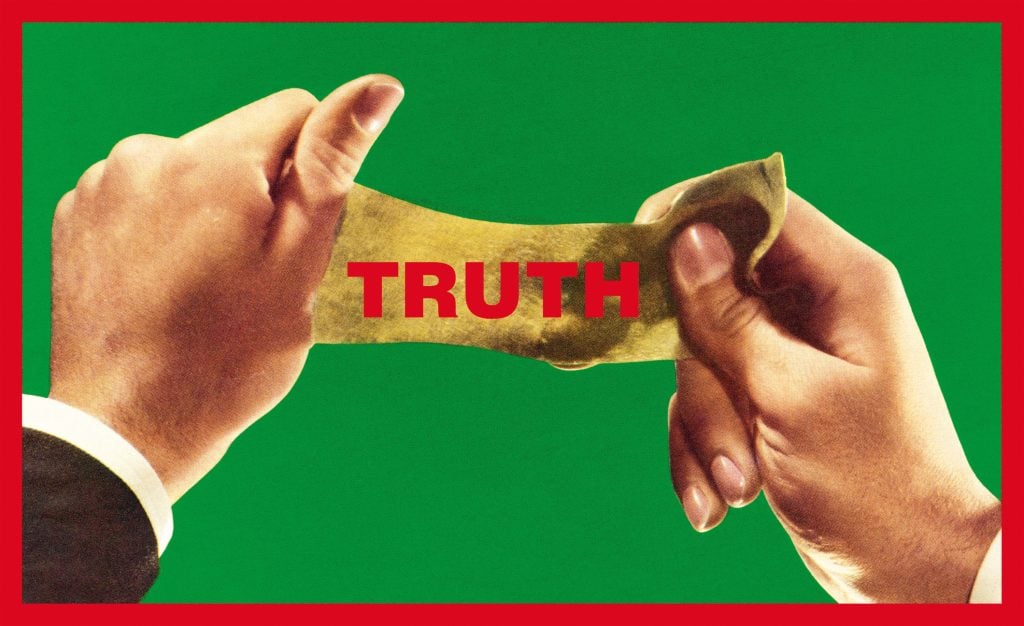
From pop culture crossovers to sprawling art events, we've covered it all.

Artnet News

What a year it has been. Over the last 365 days, we published more than 3,700 stories, from technological developments that are literally letting us see deeper into the universe than ever before, to the billions of dollars changing hands at auction. Here is a selection of our favorites.
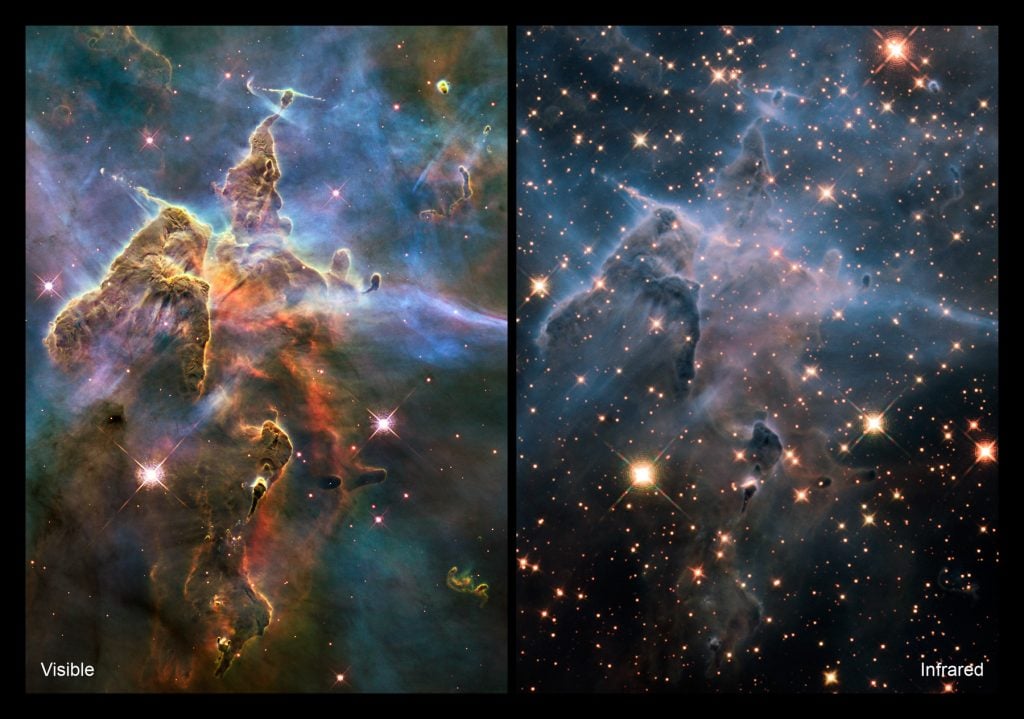
Comparison of two Hubble images of the Carina Nebula, left in visible light and right in infrared light. In the infrared image, we can see more stars that weren’t previously visible. Courtesy of NASA/ESA/M. Livio & Hubble 20th Anniversary Team (Space Telescope Science Institute).
“The ambitious project carries a $10 billion price tag and has been in development for 30 years. (It was originally supposed to launch in 2010, with a projected cost of just $1 billion.) Scientific goals for the 13,700-pound spacecraft include finding other planets with Earth-like atmospheres and oceans, as well as observing the universe’s earliest-formed, most distant galaxies.”

The auction room during Sotheby’s Modern Evening Auction. Courtesy of Sotheby’s.
“Our favorite way to judge any auction’s overall health is to compare its total hammer price to its total presale estimate. It’s the most ‘apples to apples’ method, since presale estimates exclude premiums. (And no, we don’t revise the estimate downward based on last-minute withdrawals, because those are essentially passed lots.)
“So, how did Sotheby’s, Christie’s, and Phillips do this week? Of the seven evening sales, the hammer totals in five missed their aggregate low estimates.”

Restorators at the National Art Museum of Ukraine worked on a painting prior to being transported outside of the country. Courtesy of Museums for Ukraine.
“An exhibition showcasing 51 Ukrainian avant-garde artworks that narrowly escaped the recent bombing of Kyiv will go on view next week in Spain. The show will kick off what could be a series of traveling exhibitions to promote and safeguard Ukraine’s cultural heritage amid the ongoing war.”
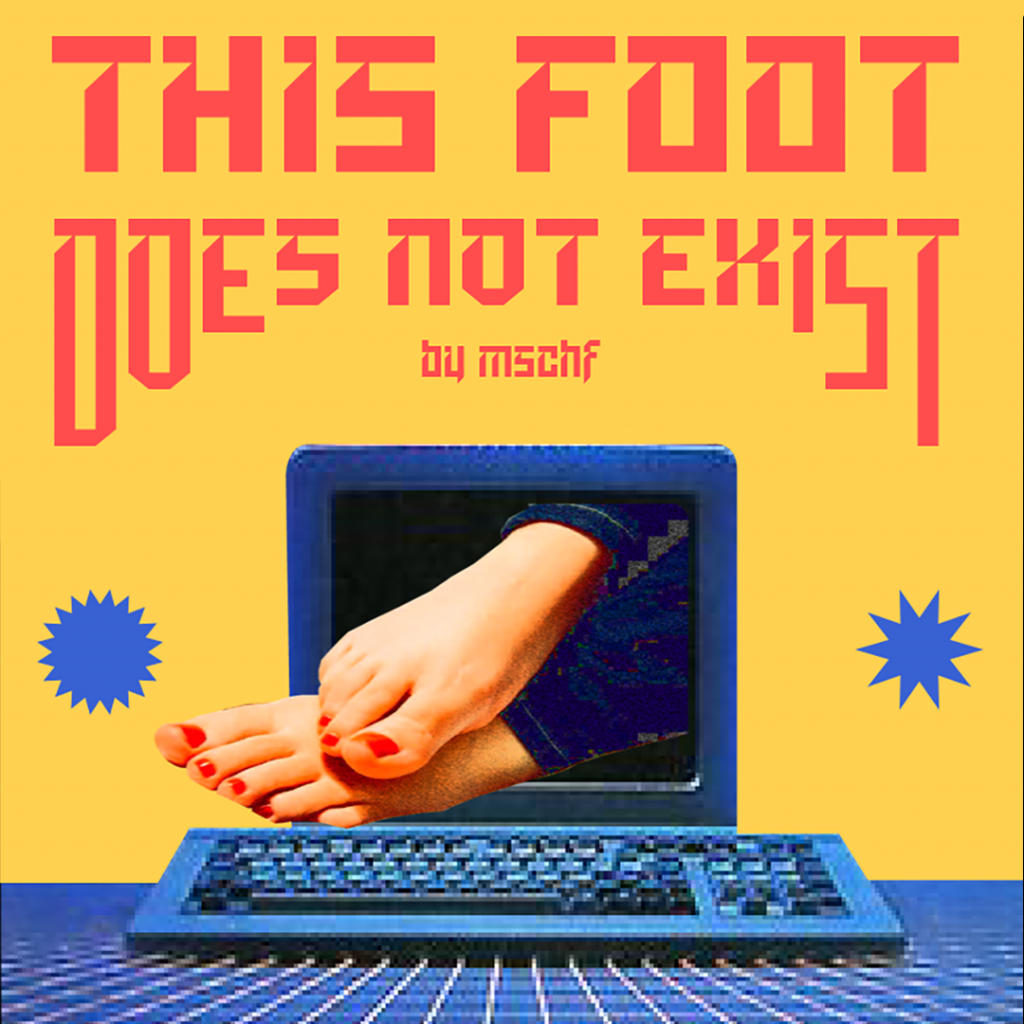
MSCHF, This Foot Does Not Exist (2020). Courtesy of MSCHF.
“The group’s blatant embrace of the commercial could make them easy to dismiss. But it also drives the central tension in their work. MSCHF not only participates in, but also exploits and profits from, the very systems they critique: vapid hype cycles and publicity stunts, the general machinery of commerce.
“Call it hypocrisy. It is. But in repeating that cycle of hypocrisy, they instantiate a kind of joke to which many of us in these the desultory days of late capitalism can relate: money is evil, but if someone’s going to make some, it might as well be me.”
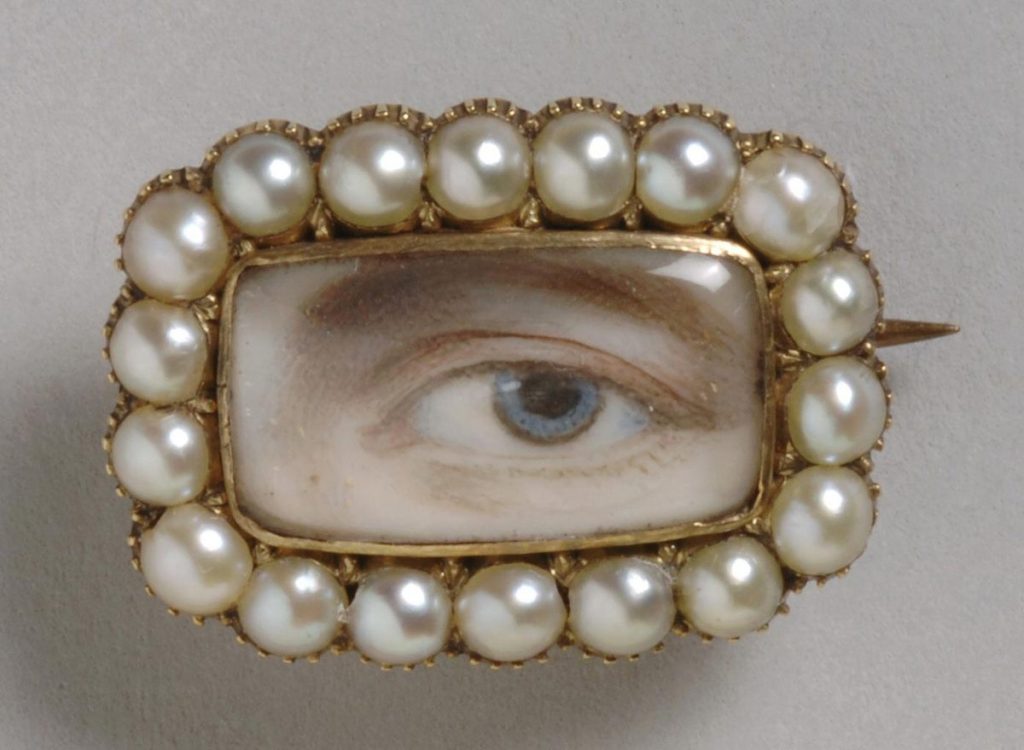
A Lover’s Eye jewel.
“Now, these fascinating jewels are experiencing a popular resurgence. In season one of Bridgerton, the character Marina Thompson repeatedly appears wearing a Lover’s Eye jewel as a choker; here the jewel serves as a costuming clue into her conflicted romantic arc.”
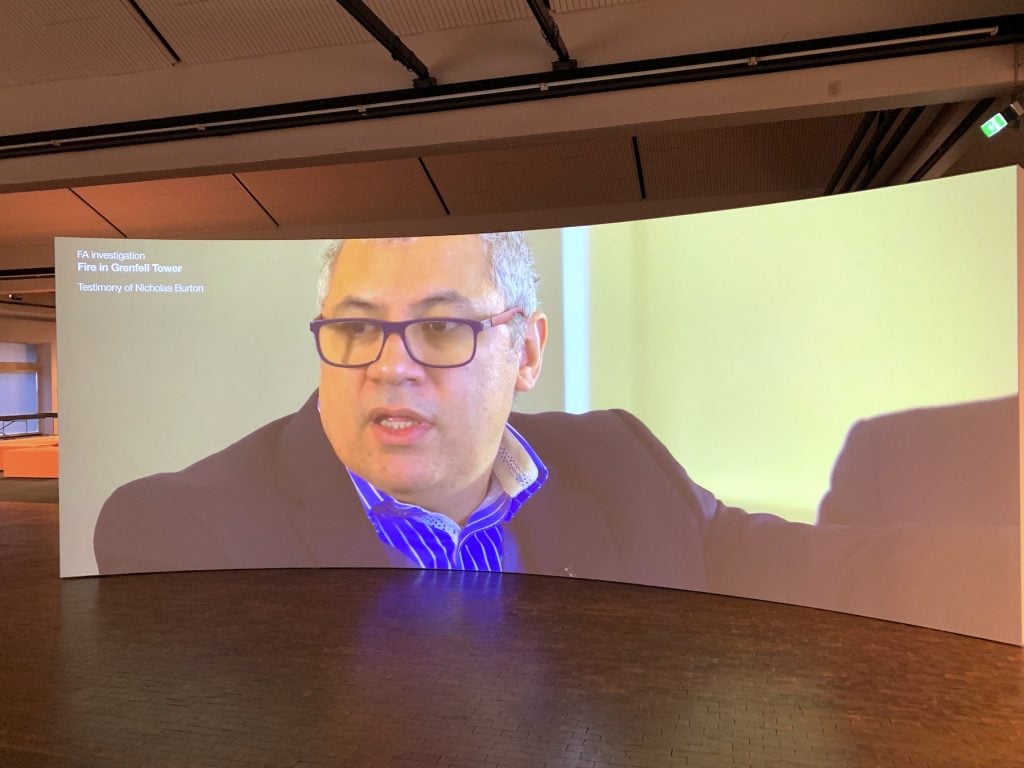
Forensic Architecture, Cloud Studies (2021) in the Berlin Biennale. Photo by Ben Davis.
“If you could somehow see every biennial or triennial in the last five years, what patterns would emerge? Which stars would shine brightest? For this project, we analyzed the artist lists for 211 recurring international art events that have happened or been announced in the five years since the opening of Documenta 14 in April 2017.”
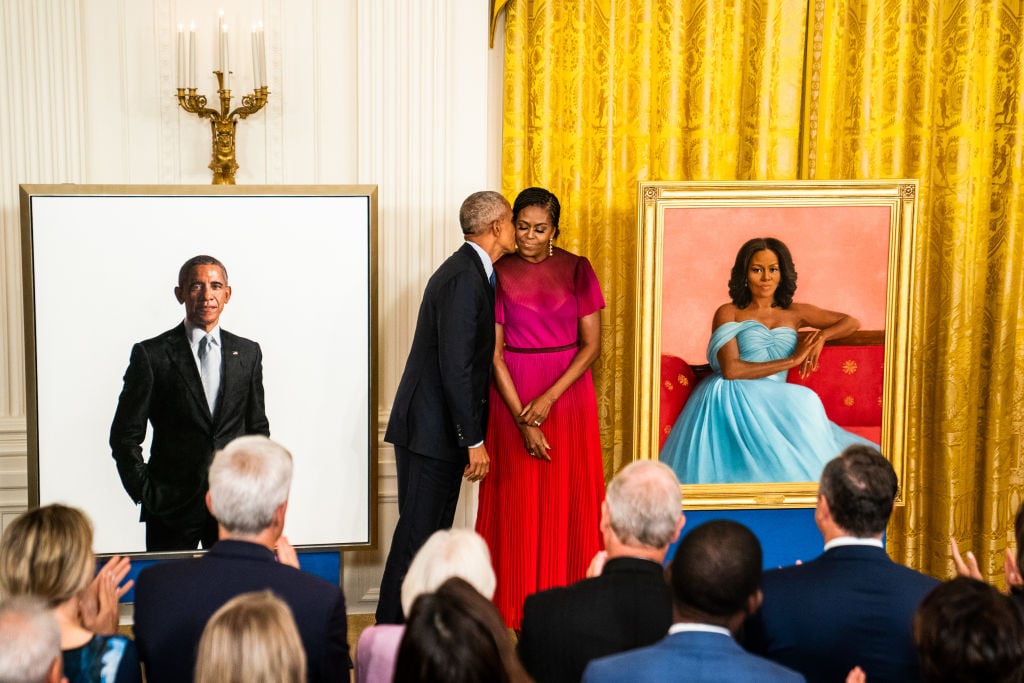
Former President Barack Obama and former First Lady Michelle Obama after unveiling their official White House portraits during a ceremony in the East Room of the White House on Wednesday September 7, 2022. Photo by Demetrius Freeman for the Washington Post via Getty Images.
“In Sprung’s painting of Michelle, the vivid colors are obvious—but pattern is a huge part of her thinking as well. ‘All of our world is patterns,’ she said. ‘If you look at the animal kingdom, if you look at nature, we’re inundated with patterns. I think they reflect, unconsciously, a lot about how we feel.’ While the patterned couch behind Michelle Obama draws attention, Sprung considers the pleats of the first lady’s blue dress her real tour de force.”
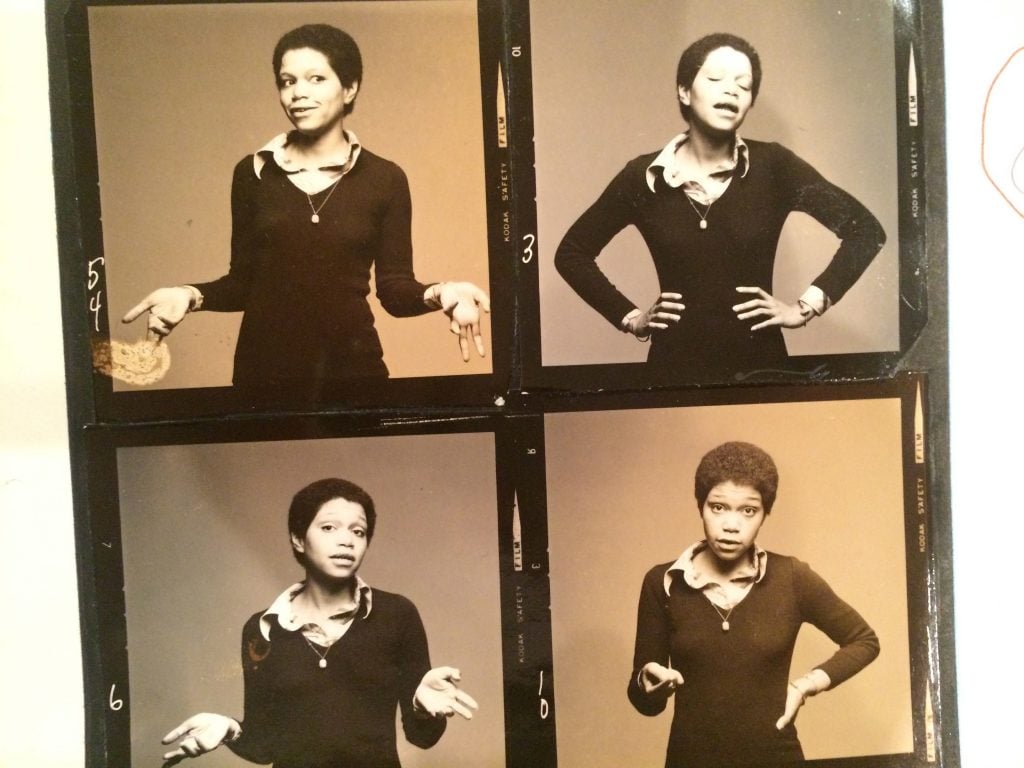
Linda Goode Bryant. Photo courtesy of Linda Goode Bryant.
“Let me just say, JAM was a challenge. It was expressed a lot by Black, Latinx, Native American and Indigenous artists, that they won’t let us show in their institutions, they won’t let us show our work side by side with our white counterparts… and I found myself saying, ‘Fuck them, let’s do it ourselves.’ The purpose and the intent of JAM was not to be part of a market that wasn’t interested in what we were doing.
“I find it disturbing, quite frankly, that increasingly the artists who are being shown in major galleries are figurative artists painting, drawing, and producing Black figures. Only this time it’s being determined by galleries—white galleries. It’s not uncommon that I’ve heard artists say, ‘I’d rather be working abstractly right now but I’m making figurative work because that’s what they want.’ That hurts me.”
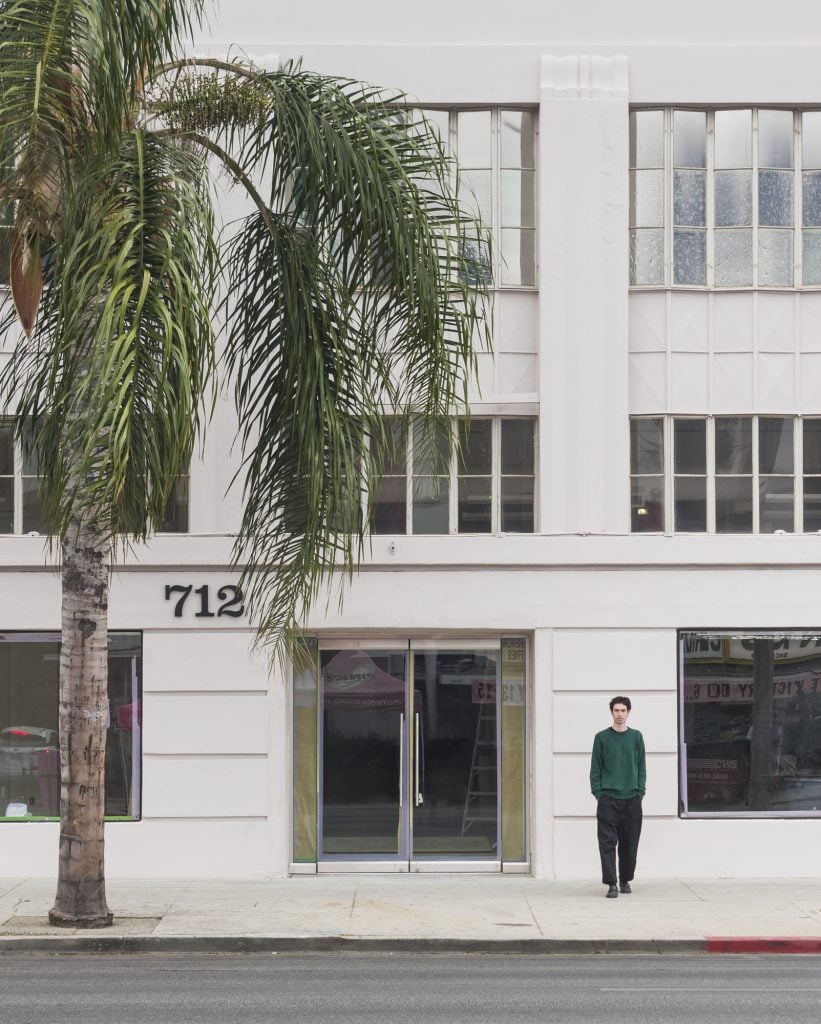
Matthew Brown in front of his gallery on La Brea Avenue. Photo: Ed Mumford.
“Is he a man-of-mystery savant, or does he just not have all that much to say? Regardless, the generational wealth behind Los Angeles gallerist Matthew Brown speaks volumes, as does his rapid climb through the ranks on the West Coast. As Clearing’s Olivier Babin put it in the piece, ‘I would go to dinners in Los Angeles, and people would be talking about Matthew Brown. But even more meta, people were talking about how many people were talking about Matthew Brown.’ Come for the intel on why his name was on everyone’s lips, stay for the photos he provided for the piece.”
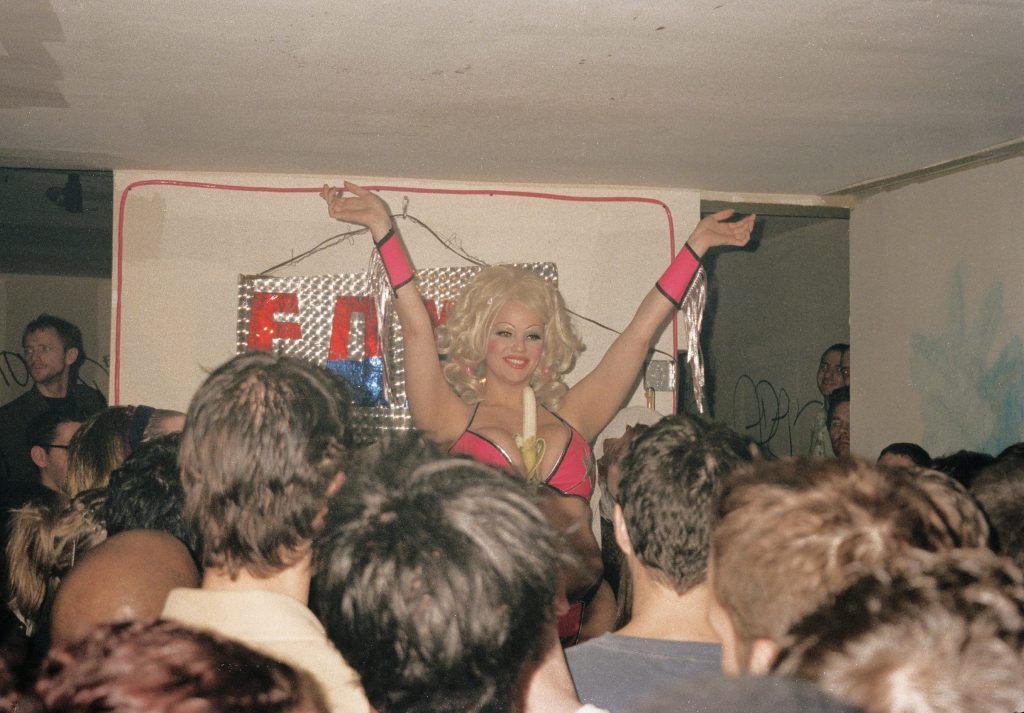
The World Famous *BOB* performing her burlesque stunt of holding a banana with her breasts and placing a condom on it with her mouth. The raw drywall would soon be painted black. Photo by Mr. Means.
“Volunteers scrambled to come onstage to take part in a depraved and silly exhibitionist talent contest. After all contestants had exposed themselves or peed in a cup or performed whatever absurd skill they had, the audience would vote for the winner.”

Photo: © Urs Westermann for Zurich Art Weekend.
“On Saturday evening in Zurich, Switzerland, over a symphony of excited dinner chatter and the clinking of champagne glasses toasting to Zurich Art Weekend, a seasoned French art collector faux hesitated as he raised a glass to his lips.
‘If it’s not too vulgar to say,’—and, in the amber glow of table lamps on the balmy summer night, I knew he would say it regardless—‘Zurich is foreplay for Art Basel.’”
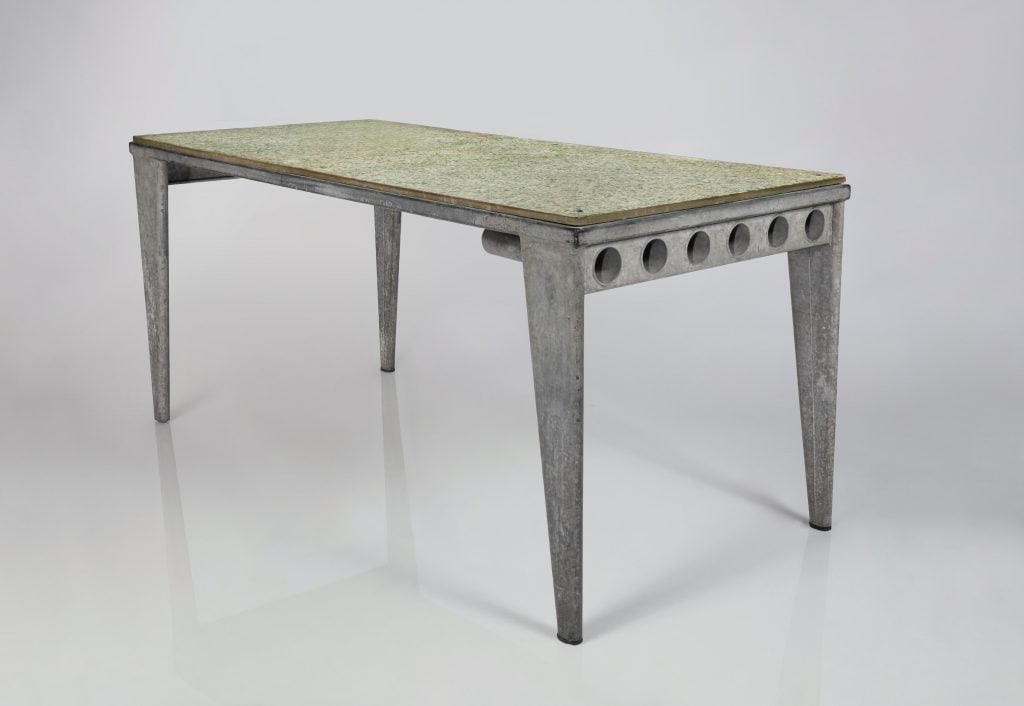
This Jean Prouvé refectory table with a “fibrated Granipoli concrete” top from the collection of Ken Mazik sold for $1.623 million at Sotheby’s New York in June 2022. Photo courtesy of Sotheby’s New York.
“Believe it or not, in recent months, Sotheby’s New York has sold not one but two Jean Prouvé tables made from fibrated Granipoli concrete—a French trade term for a mixture of cement and asbestos, a fibrous mineral known to cause mesothelioma, asbestosis, and lung cancer.”
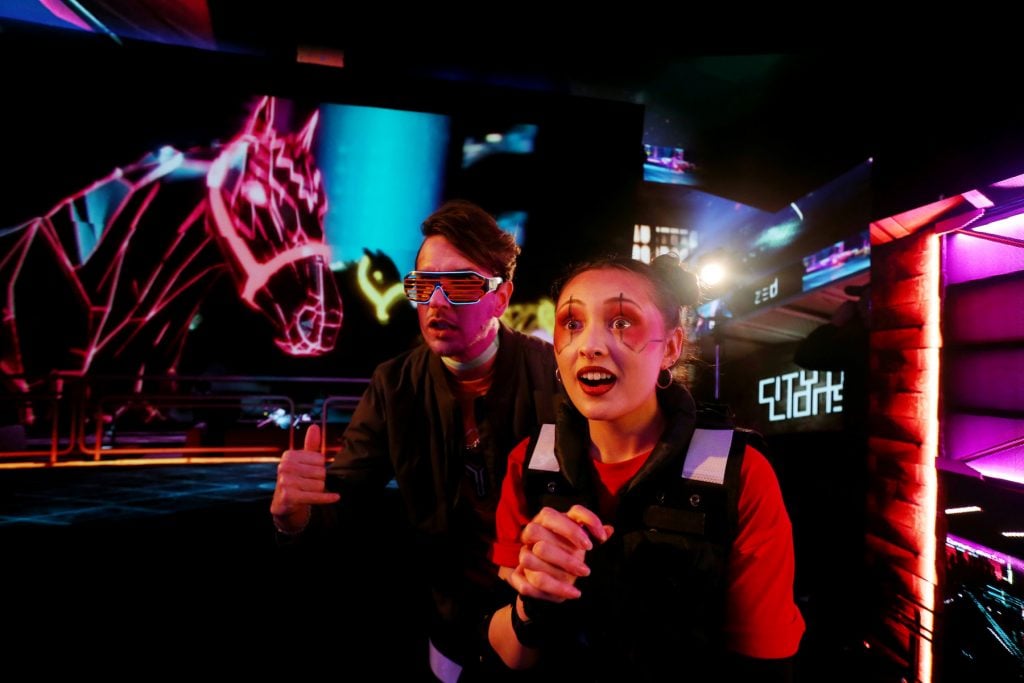
Performers Tyra Cartledge and Kendall Drury takes part in a virtual production connected to ZED RUN, the NFT-based digital horse racing game, on July 19, 2021 in Sydney, Australia. (Photo by Lisa Maree Williams/Getty Images)
“…the effect of the NFT-ization of art feels more like an intensification of the demands on creative life in the age of social media and the tyranny of feeding the algorithm, not a more wholesome, up-with-people alternative to it.”
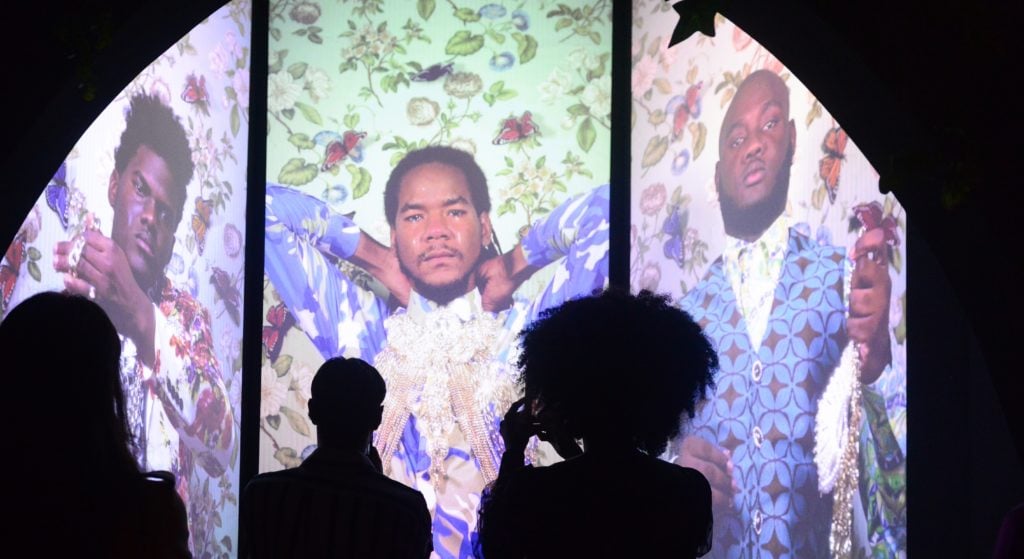
Installation view of “Ebony G. Patterson… while the dew is still on the roses… ” at the Perez Art Museum Miami. Photo: Madison McGaw/BFA.
“There has been much discussion in recent years about diversity in the art world. But statistics show that the perception of progress is largely a myth.
“The 2022 edition of the Burns Halperin Report examines representation in U.S. museums and the art market for work by Black American artists, female-identifying artists, and Black American female-identifying artists by tracking museum acquisitions and exhibitions, as well as auction results, over more than a decade.
“If you only read one piece from the report, make it this one.”
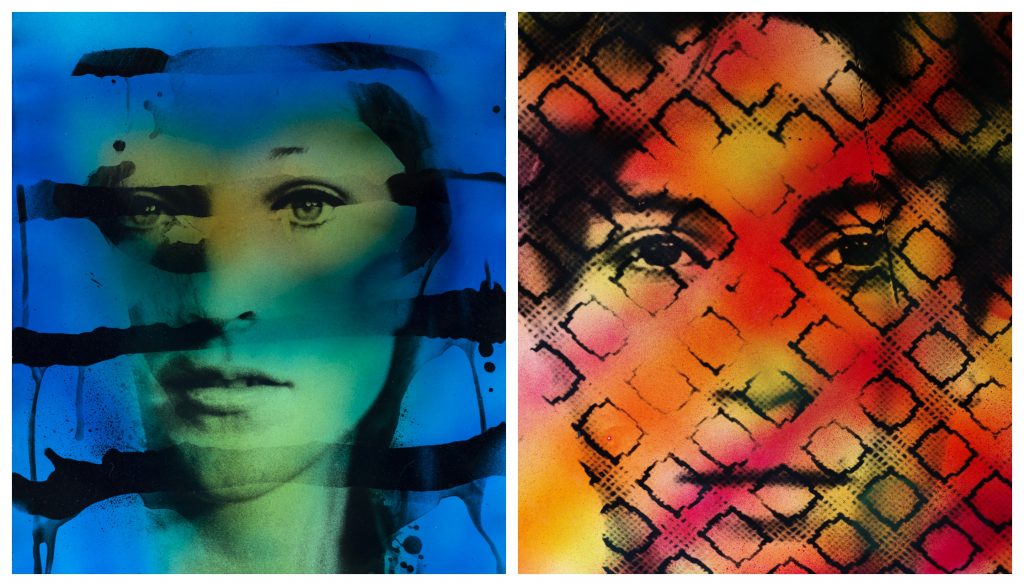
“Face (Blue and Green),” Palm Springs, CA, 1968 and Kali’s portrait of her daughter, Susan Archibald, “Symmetry Su” Palm Springs, CA. 1967. Courtesy of Staley-Wise Gallery.
“Completely under the radar in her lifetime (Kali died in 2019), she is now being recognized for her ecstatic, experimental photography. Her style is unmistakable. No Kali work was complete without vivid colorization. She was known to combine as many as eight negatives to make a print, overlapping and layering images. Other times, she’d use spray paint or toss on sand. In some pieces, mosquitoes were trapped on the messy surface like flypaper, becoming part of the piece.”
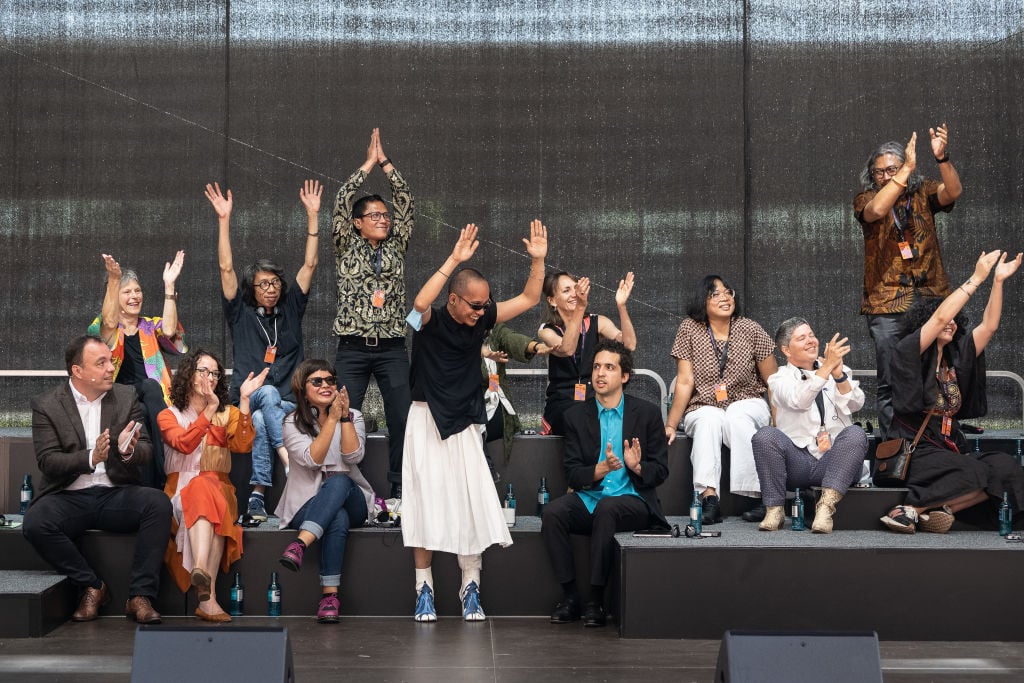
Members of the Indonesian artist collective Ruangrupa applaud the artists in the crowd during the press conference in the Auestadion. Photo: Swen Pförtner/dpa via Getty Images.
“Artnet News spoke with ruangrupa—a collective with a fluctuating cast of around 10 members—about the show that will likely change the course of Documenta. As the hundred days comes to a close on Sunday, September 25, one of the the group’s members reflected on the experience from Kassel. In keeping with ruangrupa’s ethos, they declined to be named and spoke for all of the members collectively.”
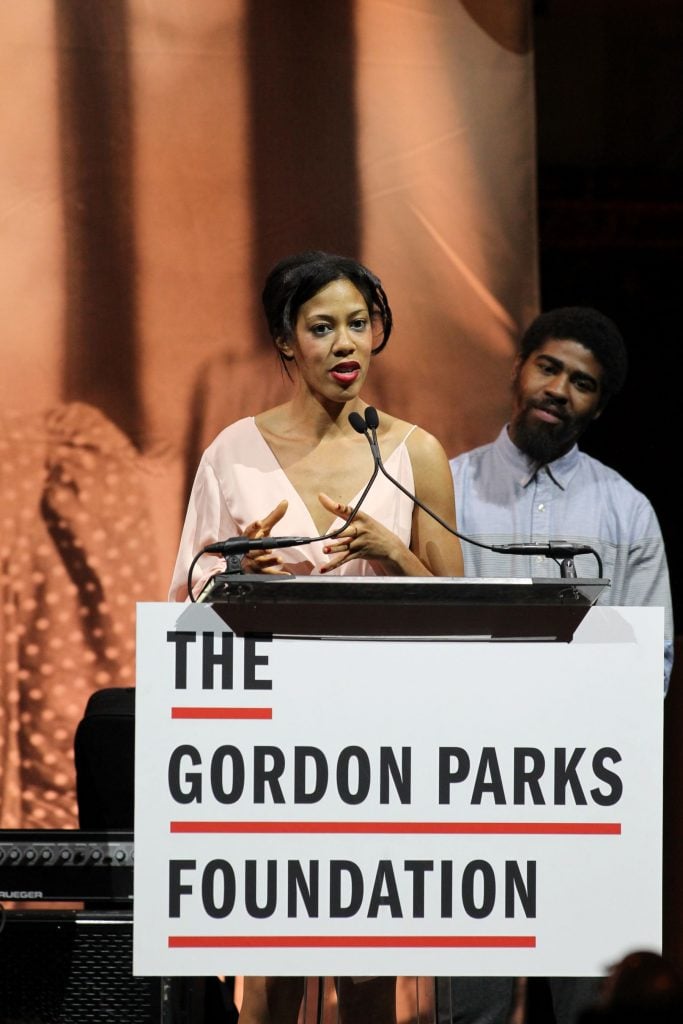
Gordon Parks Foundation fellow Deana Lawson speaks on stage during Gordon Parks Foundation’s 2018 Awards Dinner & Auction at Cipriani in New York City. (Photo by Bennett Raglin/Getty Images for Gordon Parks Foundation)
“In Lawson’s fantasies, and her attraction to ‘sexy mothers,’ ‘acrylic nails,’ and ‘weaves on pavement,’ I read a symptom of a familiar kind of cultural dislocation on the part of some Black artists. As they are drawn into elite institutions, a younger generation of artists and photographers has embraced visual tropes from a longed-for, yet essentialized, working-class Black experience, using a stock set of signifiers like nails, gold-capped teeth, bamboo earrings, and durags.”
This baby Jesus sculpture at LA Museum of Art looks like Mark Zuckerberg pic.twitter.com/NLgmr7vNK3
— Arix (@Arix_Ki) August 14, 2022
“One user wrote that the sculpture was ‘more realistic’ than Zuckerberg himself, and yet another asked if perhaps Arix’s post was the result of a Dalle prompt… The best response, however, came from ex-Twitter CEO Jack Dorsey, another highly meme-able tech guru who simply responded to Arix’s post with the comment ‘Meta.’”
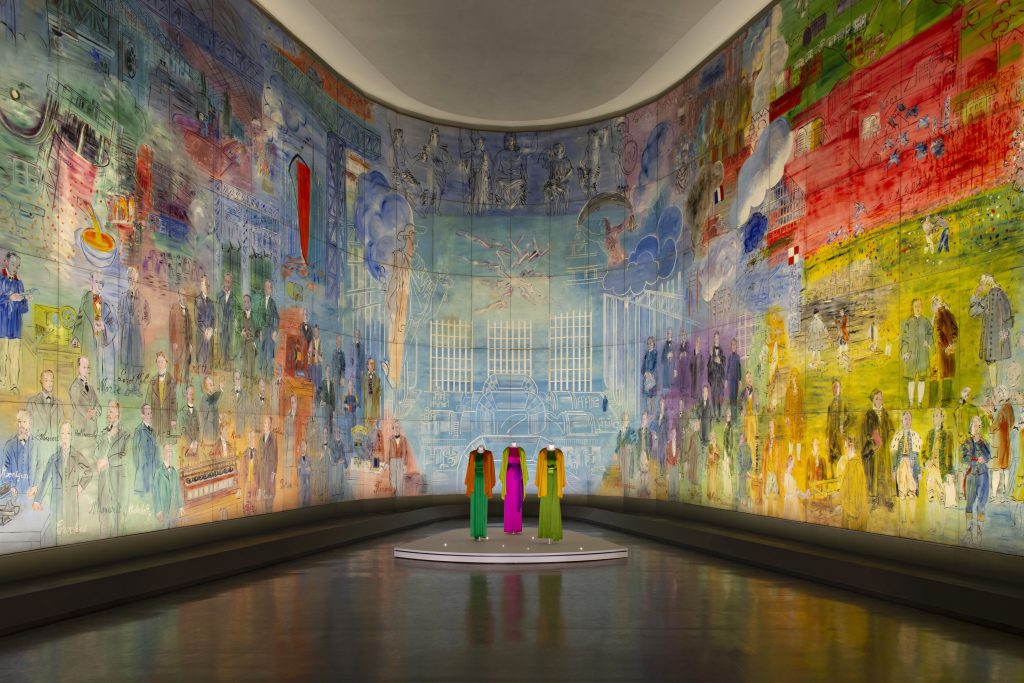
A trio of satin ensembles from Yves Saint Laurent’s fall-winter 1992 collection, amid the 1937 Raoul Dufy installation, la Fée Electricité, in Paris’s Musée d’Art Moderne. © Nicolas Mathéus.
“Never before have the French capital’s fine art institutions come together in this way—with minimalist scenography from designer Jasmin Oezcebi as a unifying thread—not even for the finest and most famous of French artists. (Henri Matisse? Claude Monet? Pablo Picasso? Non, non, et non.)”
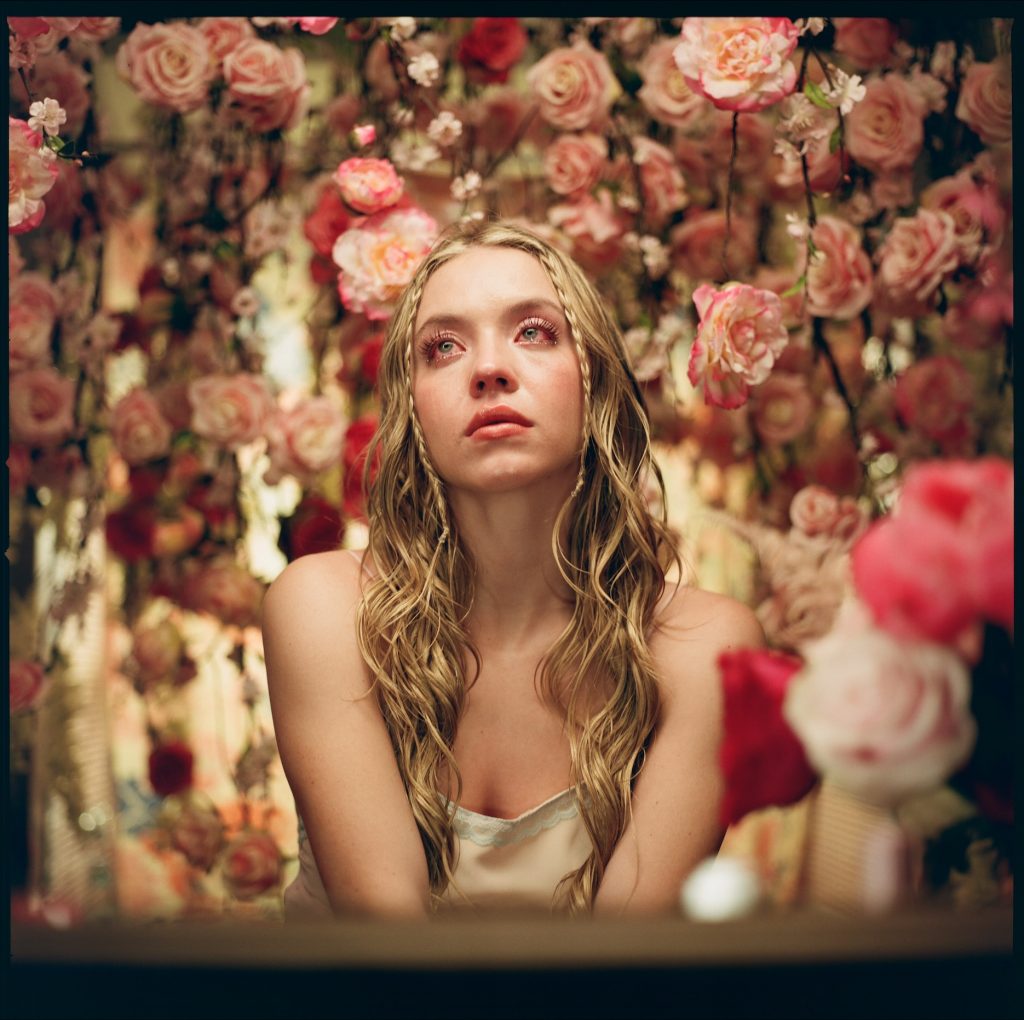
Euphoria‘s Cassie Howard (played by Sydney Sweeney) in a scene inspired by Mexican murals of the 20th century. Photo by Marcell Rév, courtesy of the artist and HBO.
“At the end of a recent episode of HBO’s Euphoria, the camera looms on a character named Cassie, sick on love and lots of alcohol, crying amongst hundreds of hanging roses. As the shot zooms out, we see that she’s in her room, staring into a vanity mirror. It’s a moment that borders on magical realism. The flowers have no logical reason for being there, yet they make sense: a manifestation of the character’s own perception of herself, perhaps, an object of ephemeral beauty left out to dry.”
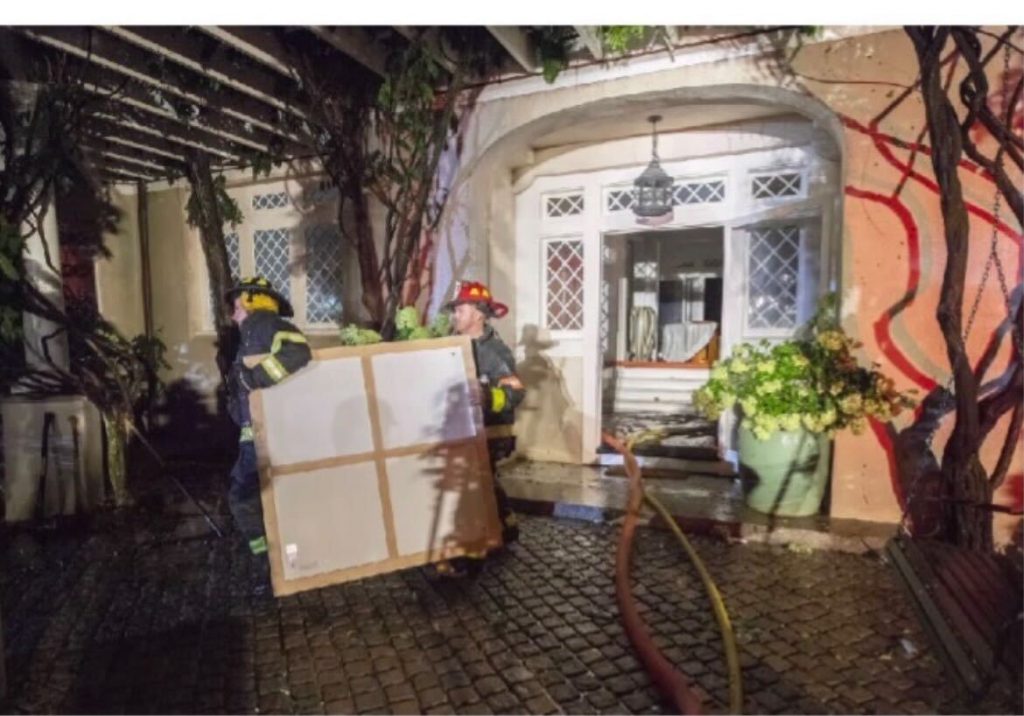
An artwork being carried out of the home. Image via Supreme Court Records Online.
“Asked what changes he noticed in the Twombly, Perelman responded: ‘All of the pictures lost their luster, lost their depth, lost some of their definition and lost a lot of their character.’
“Asked for more specifics, he continued: ‘It just didn’t have its spark. It didn’t have its distinctive definition in the lines, in the swirls. It just lost—it just lost its oomph.’
“He compared it to a piece of music. ‘I mean if the piano is out of key, and you’ve heard the piece performed on a piano that’s in tune, you know the difference.'”

Screenshot from FridaNFT’s video “Burning of a $10M Frida Kahlo Painting,” showing entrepreneur Martin Mobarak burning Kahlo’s Fantasmones Siniestros to promote an NFT.
“Here’s a very contemporary art-world brain puzzle: An entrepreneur burns his Frida Kahlo drawing in a scheme to sell NFTs. What’s worse: If it’s a total scam, or if it’s totally real?…
“In any case, if you are looking for something that looks like a parody of every bad idea in crypto of the last year and a half, go watch the FridaNFT launch video.”
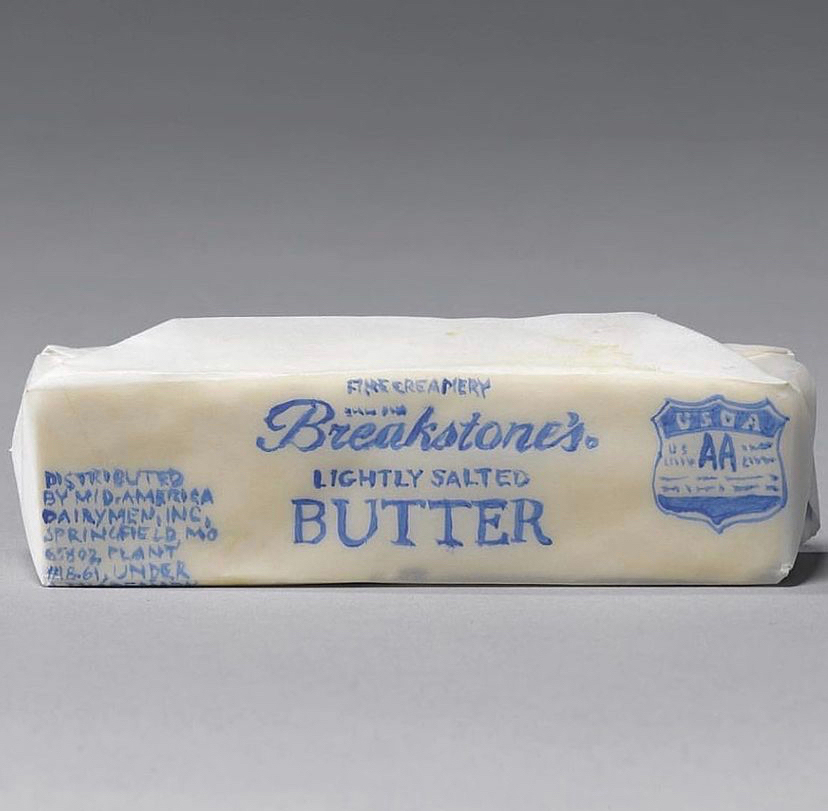
Robert Gober, Untitled (1993).
“Butter. It’s a beloved ingredient found in households around the world—and it has frequently been the source of inspiration for artists. By some accounts, the history of butter dates back to 8000 B.C.E. in ancient Africa. Over the centuries, it has been used as a healing unguent, for cosmetic purposes, and, of course, for cooking and baking. High in fat, it adds flavor and richness to dishes, but in the artistic realm, it has taken on a symbolic and thematic life of its own. From sumptuous 19th-century still lifes to 21st-century performance art, butter has served as a key element for many artists’ work.”
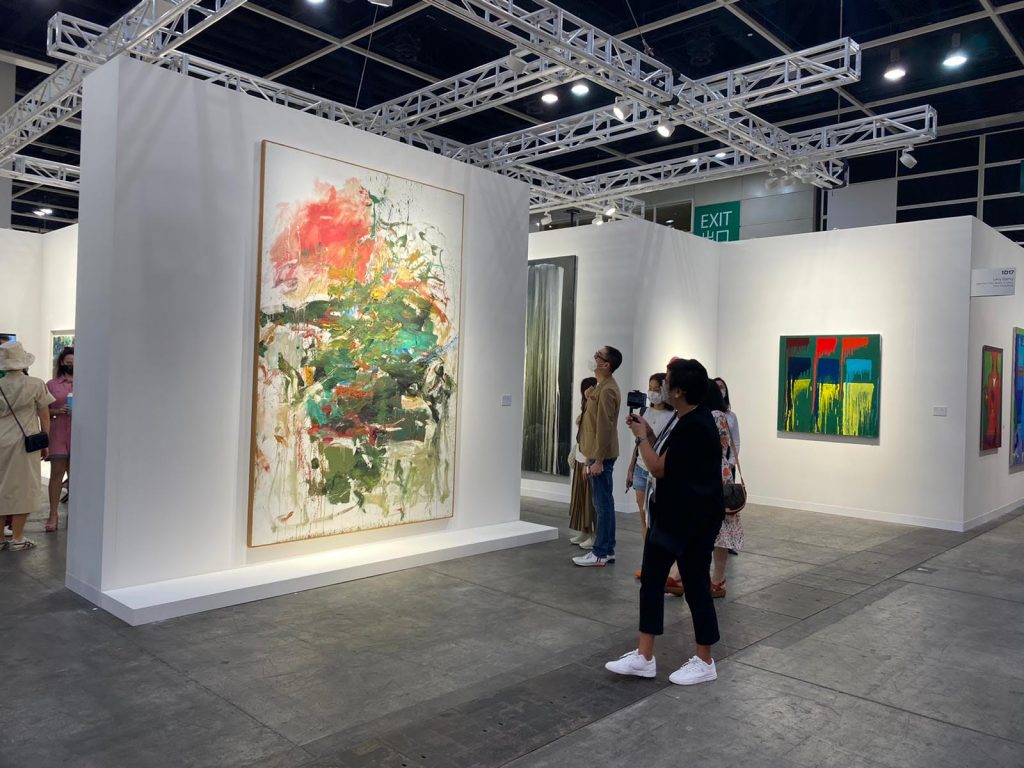
Joan Mitchell’s 12 Hawks at 3 O’Clock (1960) at Lévy Gorvy’s booth in Art Basel Hong Kong. Photo courtesy of the gallery.
“There are famous cases of lies getting dealers into legal trouble… But these are extreme cases.
“The lies most dealers tell aren’t illegal—or even close to illegal. They are simply part of doing business in an opaque industry where information is the most valuable currency. While often whispered about, they are usually impossible to dispute.
“But in at least one case of a quotidian—and, it should be said, not illegal—misrepresentation, we have receipts.”
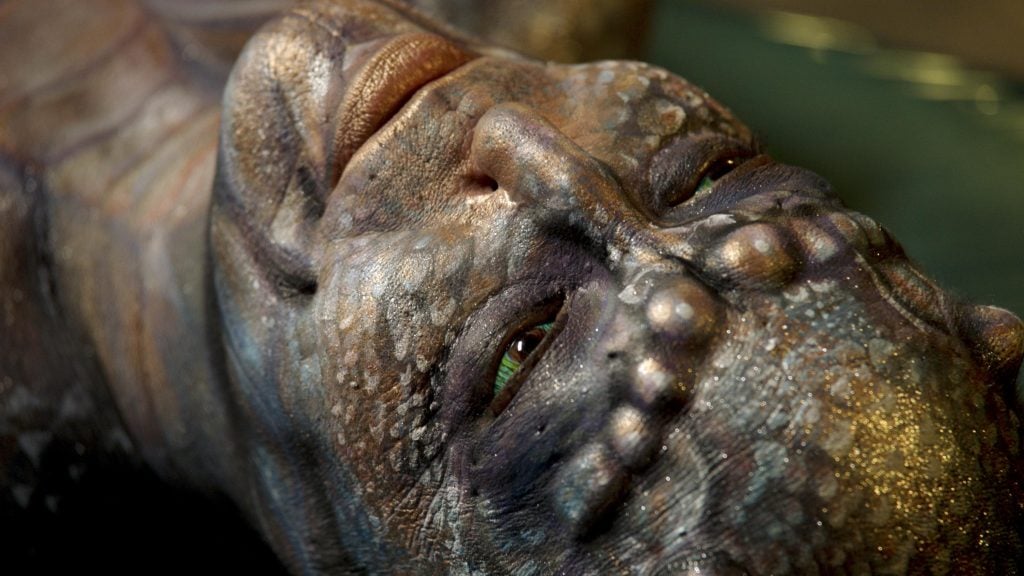
Carlos Motta and Tiamat Legion Medusa, When I Leave This World (2022), still. Courtesy of the artist, P.P.O.W. Gallery, and OCDChinatown.
“My own conceptual art is my body art. I’m a walking and breathing work of art myself—I use my own body as my canvas as I turn myself into a human dragon through body modification.”
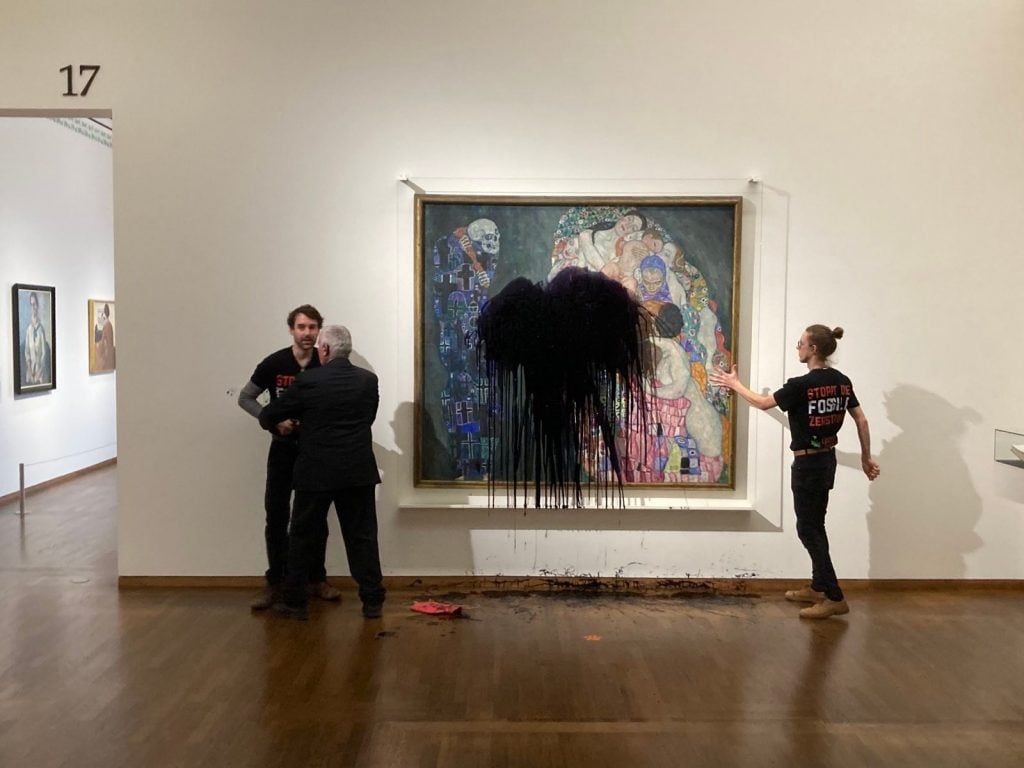
Two activists for Letzte Generation (Last Generation) throw “a black, oily liquid” at a painting by Klimt at the Leopold Museum in Vienna on November 15, 2022. Photo courtesy of Letzte Generation Österreich.
“But because these actions are based on shocking people into paying attention, the campaign has only two ways to go—to peter out as the media begins to treat them as PR stunts, or to escalate to keep up the momentum. The food-attack-on-art tactic was already an escalation from the earlier glue-yourself-to-art method, as that became less newsworthy.”
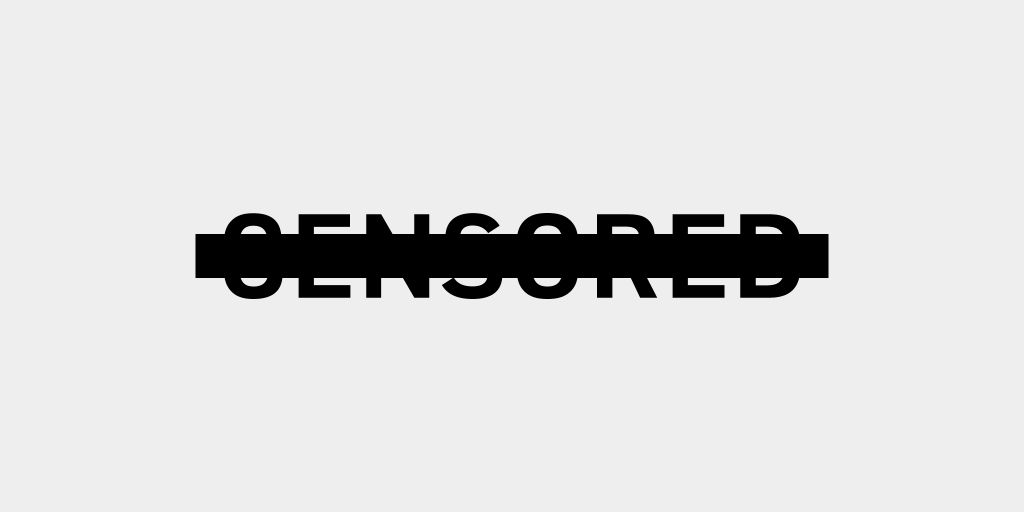
“Censored,” an NFT collection by Pak and Julian Assange. Courtesy of Pak.
“A few months ago, I was contacted by Julian’s brother, Gabriel [Shipton]. I had the chance to learn the story of Julian in depth. At the time, I was working on a drop with the theme of freedom because of my personal problems as a creator in art space: I constantly feel gatekeeping and censorship. I am in love with creating different mechanisms to communicate my messages. For ‘Censored,’ the drop needed a good reason to exist and Julian was just the perfect fit.”
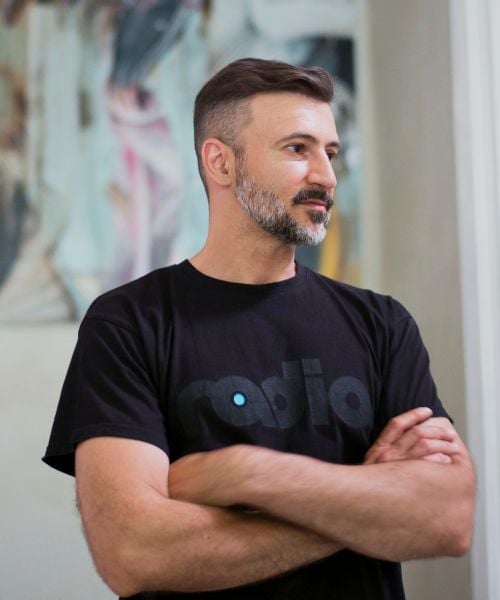
Adrian Ghenie portrait, 2022. Photo: Alessandra d’Urso. ©the artist, courtesy the artist.
“Money first, art second. That’s how conversations about Adrian Ghenie usually go.
“In the art industry, the Romanian painter is a celebrity. Collectors have been clamoring for his semi-abstract compositions since he burst onto the international scene around a decade ago. Today, primary access to Ghenie’s work is tighter than ever, and flippers are having a fiesta. In the first half of this year, his total sales at auction reached $39.3 million, according to Artnet Analytics. In May, his record was busted twice in quick succession, when a painting sold for $9.3 million at Sotheby’s New York and then, seven days later, another hammered down for $10.3 million at Christie’s Hong Kong.
“Outside of the art world, few people know who he is. And there’s a reason for that.”

Anna Delvey is seen on November 28, 2022 in New York. Photo by MEGA/GC Images.
“I used to own annadelvey.com, but then the domain expired because I went to jail.”
“She decided to make an effort to regain control of all Anna Delvey-related domains, and then tweeted: ‘I own myself across the board.’
“That’s when the NFT suggestion came in.”
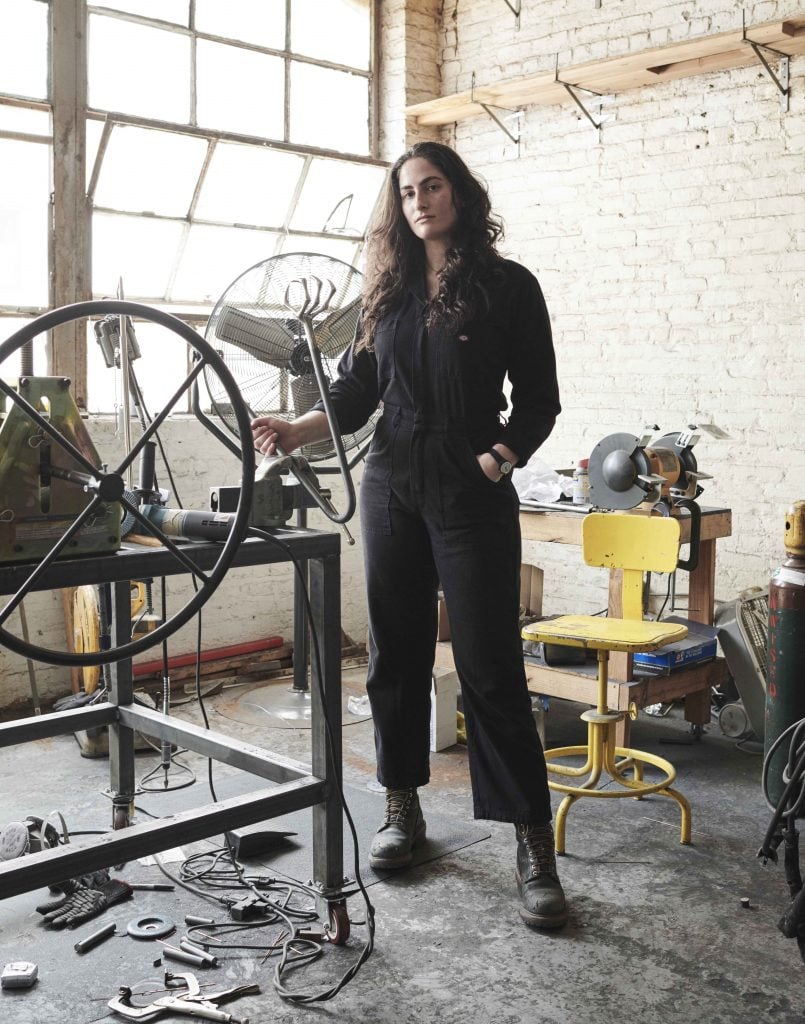
Hannah Levy in her studio, 2022. Photo: David Schulze.
“Levy’s forms appear recognizable at first—a coat rack, a swing set, an inverted umbrella—but look again, and you aren’t sure what you’re seeing. Most are made of fleshly silicone that’s stretched over, or punctured by, machined metal—the membranous squish of the former totally at odds with the industrial heft of the latter. Think Le Corbusier by way of Cronenberg.”
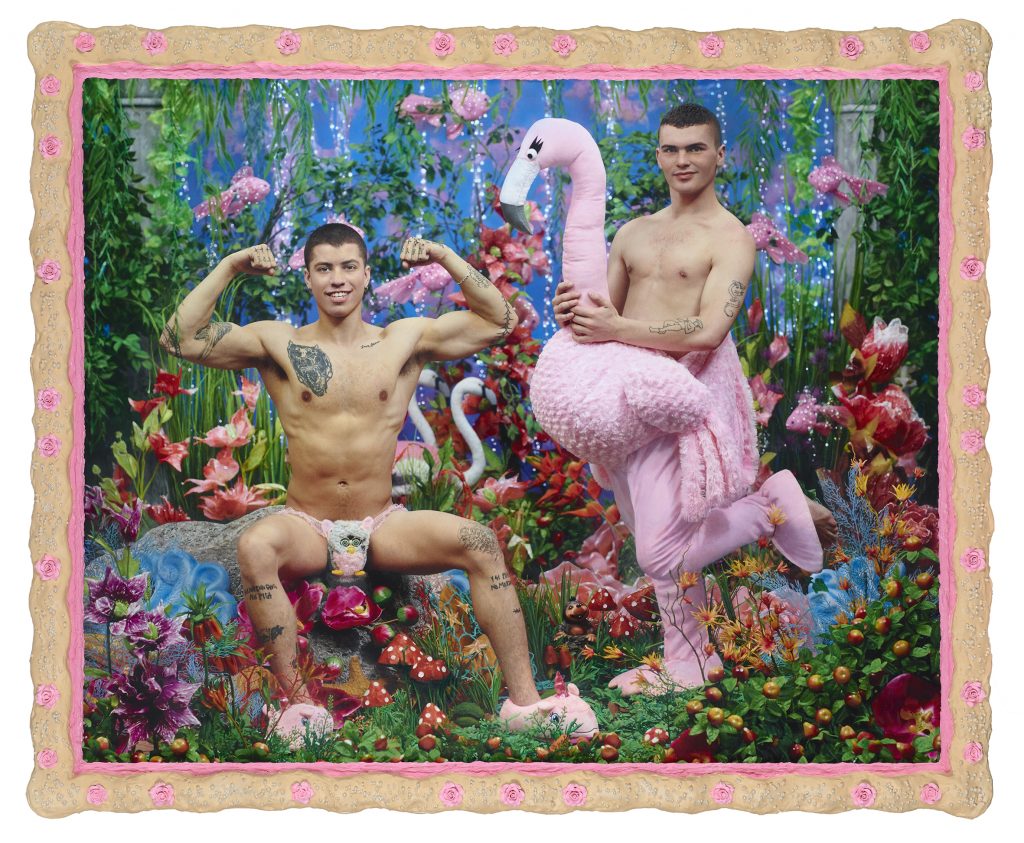
A sneak preview of “Le Jardin Enchante'” featuring Jonah Almost and Louis Bubko. Image by and courtesy of Pierre et Gilles.
“’This is my proudest moment in modeling, being on a Mexican McDonald’s bag.’ At 23, Louis has become a hard-to-quantify downtown It-Boy malgre lui. He was a model, but also kind of a fake one. Every so often he pops up, Zelig-like, in a fashion campaign or magazine—an impish Waldo with a front-tooth gap and a unibrow starter kit.”
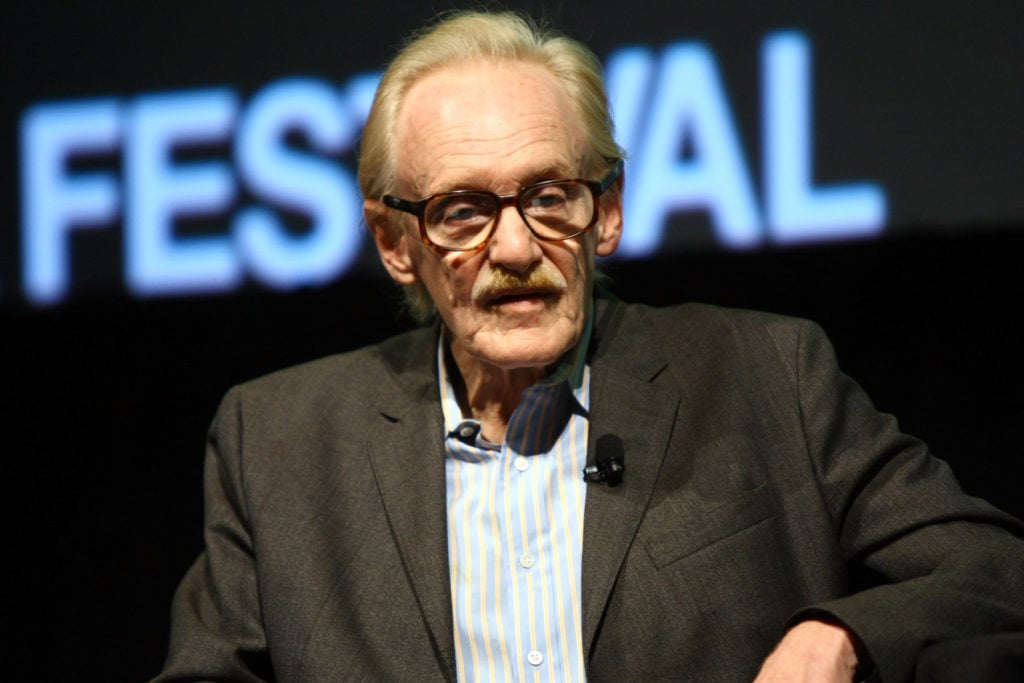
Peter Schjeldahl at the 2011 New Yorker Festival. Photo by Neilson Barnard/Getty Images for The New Yorker.
“That’s the other thing I notice reading a lot of Schjeldahl—for all his authority, he is often reconsidering, circling back, comparing present experience with past. I thought this once, now it seems different to me. Every piece is a record of how thought and perception met on some occasion, and what new things they had to say to each other. I think that sense of constant, uneasy, honest aliveness is what he thought art writing could offer.”